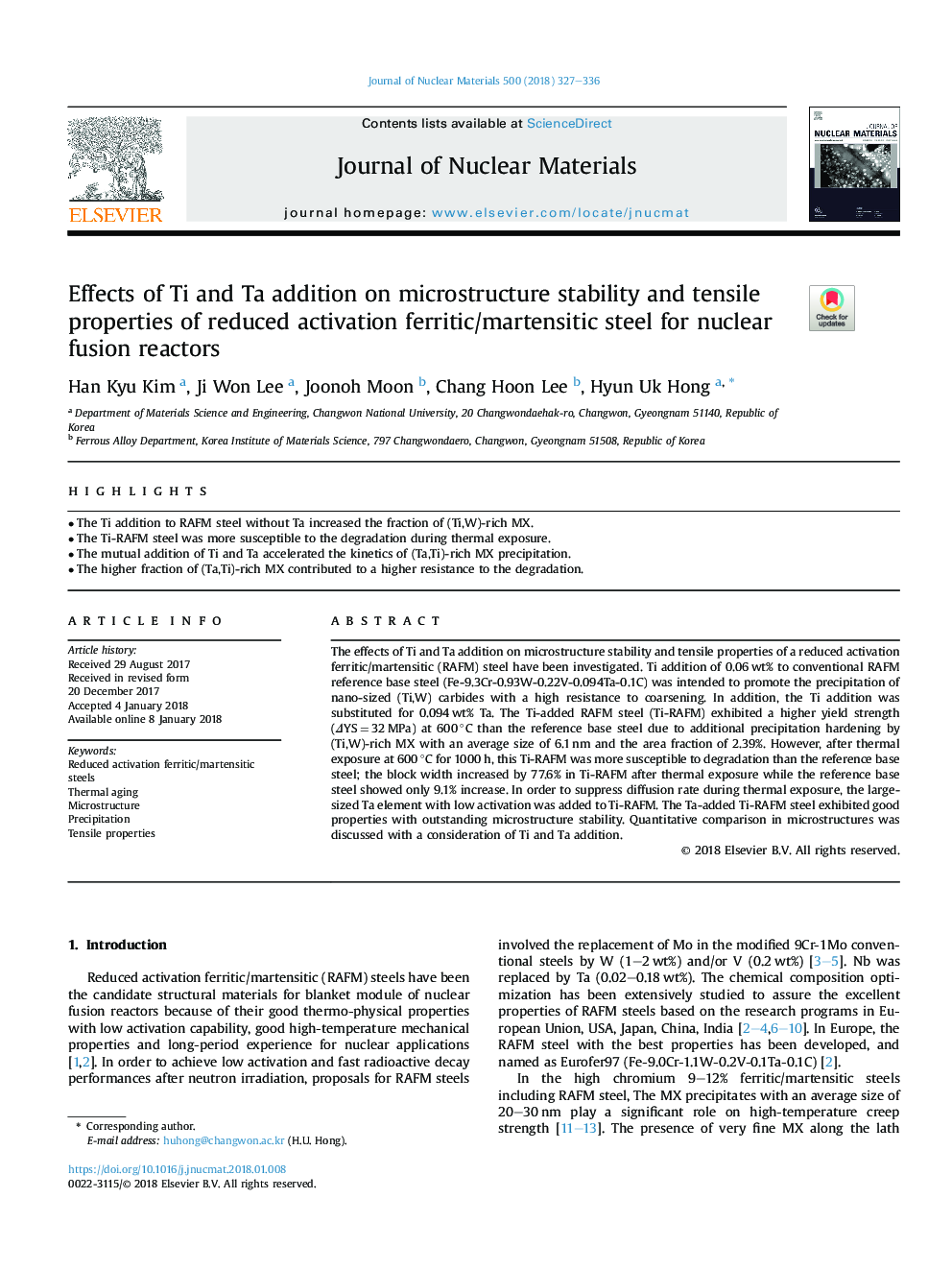| Article ID | Journal | Published Year | Pages | File Type |
|---|---|---|---|---|
| 7963493 | Journal of Nuclear Materials | 2018 | 10 Pages |
Abstract
The effects of Ti and Ta addition on microstructure stability and tensile properties of a reduced activation ferritic/martensitic (RAFM) steel have been investigated. Ti addition of 0.06â¯wt% to conventional RAFM reference base steel (Fe-9.3Cr-0.93W-0.22V-0.094Ta-0.1C) was intended to promote the precipitation of nano-sized (Ti,W) carbides with a high resistance to coarsening. In addition, the Ti addition was substituted for 0.094â¯wt% Ta. The Ti-added RAFM steel (Ti-RAFM) exhibited a higher yield strength (ÎYSâ¯=â¯32â¯MPa) at 600â¯Â°C than the reference base steel due to additional precipitation hardening by (Ti,W)-rich MX with an average size of 6.1â¯nm and the area fraction of 2.39%. However, after thermal exposure at 600â¯Â°C for 1000â¯h, this Ti-RAFM was more susceptible to degradation than the reference base steel; the block width increased by 77.6% in Ti-RAFM after thermal exposure while the reference base steel showed only 9.1% increase. In order to suppress diffusion rate during thermal exposure, the large-sized Ta element with low activation was added to Ti-RAFM. The Ta-added Ti-RAFM steel exhibited good properties with outstanding microstructure stability. Quantitative comparison in microstructures was discussed with a consideration of Ti and Ta addition.
Keywords
Related Topics
Physical Sciences and Engineering
Energy
Nuclear Energy and Engineering
Authors
Han Kyu Kim, Ji Won Lee, Joonoh Moon, Chang Hoon Lee, Hyun Uk Hong,
